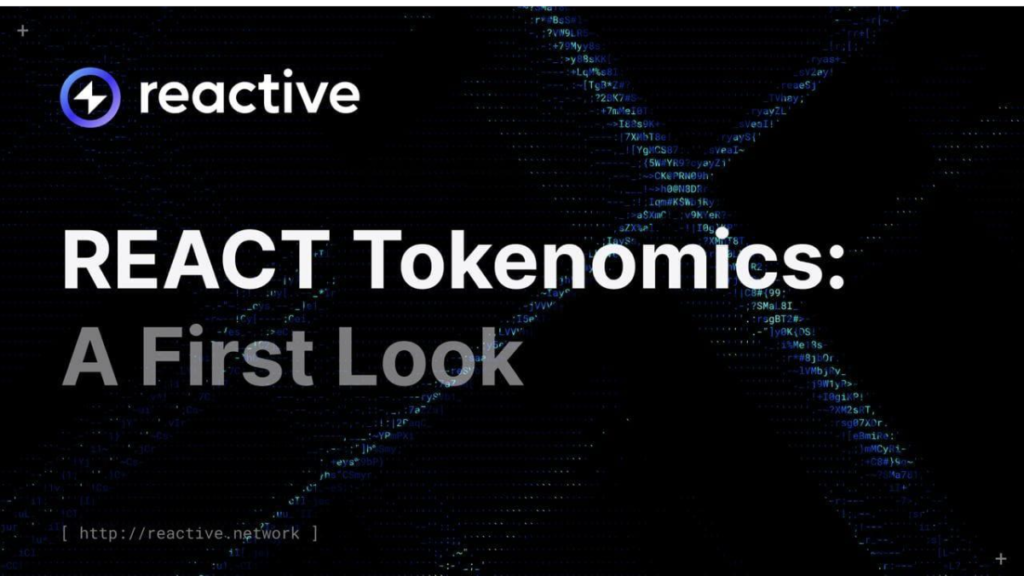In the dynamic blockchain ecosystem, adaptability is the only constant. As users continue searching for the latest innovations to streamline the foray into Web3, several young players are stepping up their game and launching new and revolutionary concepts. Among the front-runners is PARSIQ, a leading Web3 unicorn with an impressive track record.
PARSIQ recently unveiled its latest tokenisation campaign for the Reactive Network. Aptly called the REACT token, the currency will play a central role in the Reactive ecosystem. The announcement includes important details about the token’s utilities and how existing users can migrate from PARSIQ’s PRQ tokens to the new REACT tokens without compromising value. So, let’s dive straight into the details to help you understand everything there is to know about PARSIQ’s latest venture.
The REACT Tokenomics
As mentioned earlier, the REACT token is the Reactive Network’s native currency. At launch, it will have a total supply of 500 million tokens, which is identical to the PRQ token’s initial supply. This was intentional to prevent dilution for existing PRQ token holders and maintain fairness and trust within the community.
PARSIQ will initially circulate a maximum of 310,256,872 REACT tokens. This is the exact number of PRQ tokens currently in circulation. Therefore, existing token holders can seamlessly transition from PRQ to REACT at a 1:1 ratio without losing value. While this number is speculative at best, assuming every PRQ user will swap their tokens on the first day, the actual initial supply will likely be lower.
Furthermore, PARSIQ will restore the remaining 189 million tokens that were previously burned, to support the interoperable blockchain layer and incentivise developmental efforts. The company is focusing on community participation instead of institutional investors. Hence, the token’s supply chain is unreserved with zero allocation for VCs.
As far as the restored tokens are concerned, PARSIQ will roll them out eventually, as per schedule. No further details are available yet. The company plans to split the tokens into different pools for ecosystem building and marketing. This controlled release will prevent oversupply and value dilution, eliminating the risk of market disruption. This is in line with PARSIQ’s long-term vision for the Reactive Network and exemplifies its commitment to building a sustainable token economy.
As one of the pioneers of the Web3 space, PARSIQ understands the importance of transparency. Therefore, the migration from PRQ to REACT tokens will be on a 1:1 basis. There will be no reservations for existing PRQ token holders, including institutional buyers, to ensure a fair trading opportunity for all.
As a result, once the Reactive Network mainnet goes live, users can swap their PRQ tokens either for mainnet REACT or bridged ERC 20 REACT tokens directly from the Reactive bridge, which will launch alongside the mainnet. That’s not all! PARSIQ confirmed that multiple centralized exchanges will also support this migration, streamlining the transition for community members.
The impact of $REACT on the Web3 community
Despite receiving significant interest from venture capitalists, PARSIQ decided against involving institutional investors in the early stages of the transition. This will protect Reactive Network’s integrity and strengthen the community. By distributing over half the current supply of tokens among the community, PARSIQ releases the selling pressure from large token holders.
The company plans to take more such community-centric steps to strengthen the decentralized infrastructure. At the core of this very initiative is the Reactive Network and the REACT tokens will empower users by providing real utility in several key areas, including:
- Staking: Validators can stake REACT tokens to participate in the consensus mechanism and earn rewards for securing the network.
- Transaction fees: You can pay gas fees using REACT for smooth and efficient operations.
- Log processing fees: Reactive Smart Contracts will use REACT tokens to process event logs autonomously.
The REACT tokens used for paying transaction and processing fees will be burned, paving the way for a deflationary environment within the Reactive Network. New tokens will be minted with each block to incentivize validators. However, once the number of daily burned REACT tokens exceeds that of daily minted tokens, the network will enter the deflation phase. This model is similar to the one Ethereum currently uses.
As far as the timeline is concerned, PARSIQ plans to launch the Reactive Network mainnet along with the bridge in Q4 2024. The company confirmed that additional details will be announced shortly. Therefore, interested candidates are requested to stay tuned for exciting updates.
About Reactive Network
The Reactive Network is a cutting-edge blockchain layer that is poised to revolutionise the way dApps operate across multiple EVM-compatible ecosystems. The technology uses Reactive Smart Contracts to build decentralized applications that dynamically respond to events occurring on parallel blockchains. PARSIQ’s launch of the REACT token marks a pivotal moment for the Reactive Network.
By offering a seamless 1:1 migration from PRQ to REACT tokens and prioritizing transparency, PARSIQ aims to strengthen trust within the community. This underscores the company’s forward-thinking tactic for blockchain scalability and real-world utility. As the mainnet launch approaches in Q4 2024, PARSIQ is poised to revolutionize how decentralized applications operate across multiple blockchains.

